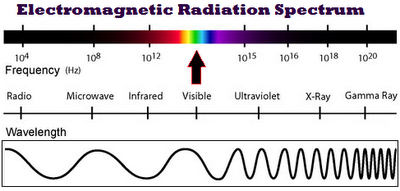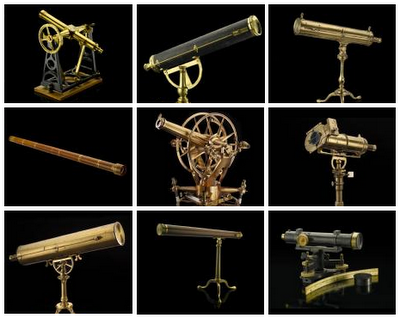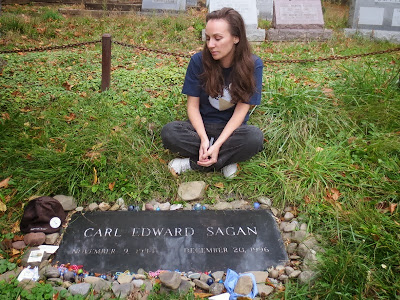Arthur Darris of Chicago, IL emailed me with the following question; upon discussion over the past couple days, he said I could use our [slightly paraphrased] conversation as a blog post. Regarding the mention of Radio Telescope technology on my last Trivia Series, Arthur asks:
There is something I have wondered about as we search for radio signals from space hoping to pick up signs of life. Why radio? Is it because that is what we use? I thought I read that our own signals aren't reaching deep space as once thought... don't they degrade as they travel? Maybe ETs don't want to interfere with our natural development so they ensure we do NOT detect them. Maybe they communicate in ways we cannot detect yet? But I never hear anyone say this when they talk about SETI. If we learned how to travel beyond our solar system, wouldn't we also need a faster way to communicate?

That tiny rainbow band is all humans can see!
Why radio waves? That is a long and monumental answer, packed with delightfully nerdy details, but the short version is: because radio waves are THERE.
Radio waves are everywhere. They are "universal" in the literal sense of the word! Truly, humans did not invent and emit them to keep up with Top 40 Hits. ;)
Electromagnetic radiation transports energy at the speed of light. Radio waves are just one form; other forms include visible light [to human eyes], X-rays, infrared, microwaves, etc. Electromagnetic radiation is widely detected, easily received, can be easily generated artificially, and lasts across vast distances… even through massive dust clouds.

Use of the radio spectrum is regulated by
governments through frequency allocation
governments through frequency allocation
Any other techie planet will discover those waves, as we did, and they'll find that tons of things in the cosmos emit all sorts of waves.
Once the wave properties are examined, any scientific observers would notice oscillation, which determines frequencies. The downside is the enormous spectrum of possible frequencies; they won't know ours, and we won't know theirs. And yes, they degrade over distance, since they are forms of energy. Everything degrades over time and distance.
So hey, let's point a big dish at the sky to collect radiation in high concentrations and amplify frequencies! Or how about a whole pack of dishes? The more dishes you have working together to provide focus, the more accurately faraway sources of various signals can be pinpointed and examined for location, distance, motion, etc. Hence, arrays.

Same Galaxy, Different Wavelengths
I had a college professor who was very down on arraying, or as he called it "desperately listening to invisibility" LOL, but I don't think it's so far-fetched. Neither does SETI, and hopefully SETI will survive. We could get lucky. In fact, many scientists believe that radio signals will be our ultimate communication, and not space travel . Our chances of finding other civilizations via Star Trekian propulsion is not currently possible, given time and distances between possible habitable planets – even if we detect them from a vast distance.
Interestingly, according to one sample, 1 in 5 people believe aliens already live among us... disguised! I tend to think of this as the "badly informed by Hollywood" tinfoil hat crowd, but who knows – the joke may one day be all on us skeptics.

If you know what this is... you're old.
Sorry. I meant that to be brief. Or maybe it was. I nut-shelled. But you can also find huge amounts of interesting data if you Google "Radio Astronomy."










